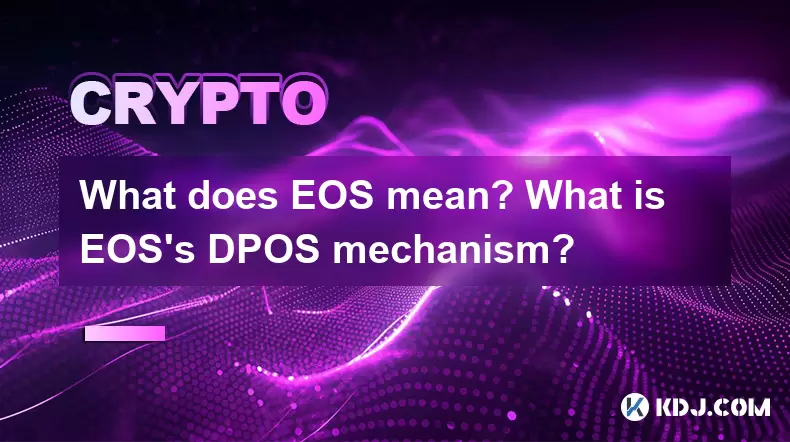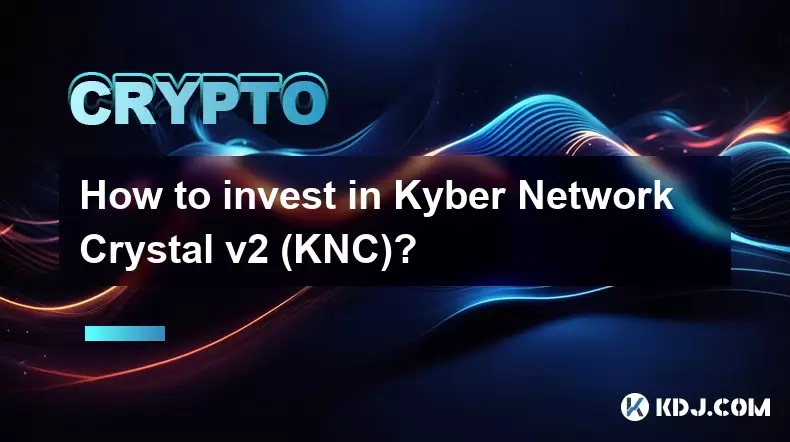-
 Bitcoin
Bitcoin $119200
-0.90% -
 Ethereum
Ethereum $4589
-2.03% -
 XRP
XRP $3.117
-4.82% -
 Tether USDt
Tether USDt $1.000
0.04% -
 BNB
BNB $839.9
-1.38% -
 Solana
Solana $196.4
-2.55% -
 USDC
USDC $0.9999
0.00% -
 Dogecoin
Dogecoin $0.2270
-7.72% -
 TRON
TRON $0.3605
0.74% -
 Cardano
Cardano $0.9306
5.96% -
 Chainlink
Chainlink $22.51
-5.00% -
 Hyperliquid
Hyperliquid $45.20
-1.80% -
 Sui
Sui $3.794
-5.63% -
 Stellar
Stellar $0.4259
-5.59% -
 Bitcoin Cash
Bitcoin Cash $593.1
-2.38% -
 Ethena USDe
Ethena USDe $1.000
-0.01% -
 Hedera
Hedera $0.2540
-3.84% -
 Avalanche
Avalanche $23.93
-4.50% -
 Litecoin
Litecoin $124.1
-5.62% -
 Toncoin
Toncoin $3.398
-1.33% -
 UNUS SED LEO
UNUS SED LEO $9.274
0.30% -
 Shiba Inu
Shiba Inu $0.00001305
-5.57% -
 Uniswap
Uniswap $11.06
-8.90% -
 Polkadot
Polkadot $4.034
-4.88% -
 OKB
OKB $99.33
-10.53% -
 Dai
Dai $0.9999
-0.01% -
 Bitget Token
Bitget Token $4.638
-3.60% -
 Cronos
Cronos $0.1541
-8.58% -
 Aave
Aave $313.0
-4.94% -
 Pepe
Pepe $0.00001127
-8.04%
What does EOS mean? What is EOS's DPOS mechanism?
EOS, launched by Block.one, uses DPOS to elect 21 block producers for efficient, scalable dApp development, with EOS tokens powering transactions and governance.
May 12, 2025 at 12:28 pm

What does EOS mean? What is EOS's DPOS mechanism?
EOS is a blockchain platform designed to facilitate the development and execution of decentralized applications (dApps). Launched in 2018 by Block.one, EOS aims to provide a scalable and user-friendly environment for developers to create high-performance applications. The EOS token, which is the native cryptocurrency of the EOS platform, is used to pay for transaction fees and resource usage within the network.
The term EOS itself is derived from the Greek goddess of dawn, symbolizing the new beginning that the platform hopes to bring to the blockchain industry. The EOS token operates on the EOSIO blockchain, which is known for its ability to handle a high volume of transactions per second, making it a popular choice for developers looking to build scalable dApps.
EOS's DPOS Mechanism
EOS employs a unique consensus mechanism known as Delegated Proof of Stake (DPOS). DPOS is a variation of the traditional Proof of Stake (PoS) mechanism, designed to enhance the efficiency and scalability of the blockchain network. In DPOS, token holders elect a number of delegates, or block producers, to validate transactions and produce blocks on their behalf.
The DPOS mechanism works by allowing token holders to vote for a set number of block producers. These block producers are responsible for maintaining the integrity of the blockchain and ensuring that transactions are processed smoothly. The number of block producers in the EOS network is fixed at 21, and they are elected through a continuous voting process.
How DPOS Works in EOS
In the EOS network, block producers are elected based on the number of votes they receive from token holders. Each EOS token holder has the ability to vote for up to 30 block producers, and the top 21 candidates with the most votes are selected to produce blocks. This system ensures that the most trusted and capable individuals are responsible for the network's operation.
Block producers in the EOS network are incentivized to perform their duties effectively, as they receive a portion of the network's transaction fees as compensation. Additionally, block producers can be voted out if they fail to meet the community's expectations, ensuring a high level of accountability.
Benefits of DPOS in EOS
The DPOS mechanism offers several advantages over traditional consensus mechanisms like Proof of Work (PoW) and Proof of Stake (PoS). One of the main benefits is scalability. By delegating the task of block production to a limited number of trusted individuals, the EOS network can process transactions at a much faster rate compared to networks that rely on the entire community to validate transactions.
Another benefit of DPOS is energy efficiency. Unlike PoW, which requires significant computational power and energy consumption, DPOS relies on the voting process and the work of a small number of block producers, making it a more environmentally friendly option.
Security and Governance in EOS
The security of the EOS network is maintained through the DPOS mechanism, which ensures that only trusted individuals are responsible for producing blocks. Additionally, the network employs various security measures, such as multi-signature wallets and smart contract audits, to protect against potential threats.
Governance in the EOS network is also facilitated through the DPOS mechanism. Token holders have the power to influence the direction of the network by voting for block producers and participating in governance proposals. This democratic approach to governance ensures that the community's voice is heard and that the network evolves in a way that benefits all stakeholders.
Token Economics of EOS
The EOS token serves as the native cryptocurrency of the EOS platform and is used to pay for transaction fees and resource usage within the network. The total supply of EOS tokens is 1 billion, and the tokens are distributed through various means, including the initial coin offering (ICO) and subsequent token sales.
The economics of the EOS token are designed to incentivize participation in the network. Token holders are encouraged to vote for block producers and participate in governance proposals, as this helps to maintain the stability and security of the network. Additionally, the EOS token can be used as a form of payment within dApps built on the EOS platform, further increasing its utility.
Use Cases of EOS
EOS has been used to develop a wide range of decentralized applications, from gaming and social media platforms to financial services and supply chain management solutions. Some notable examples of dApps built on the EOS platform include Everipedia, a decentralized encyclopedia, and Upland, a virtual real estate game.
The scalability and efficiency of the EOS platform make it an attractive option for developers looking to build high-performance dApps. The DPOS mechanism ensures that transactions are processed quickly and at a low cost, making it suitable for applications that require a high volume of transactions.
Frequently Asked Questions
How can I participate in the governance of the EOS network?
To participate in the governance of the EOS network, you need to hold EOS tokens. You can vote for block producers using your tokens, and you can also participate in governance proposals by voting on changes to the network's protocol. You can use various wallet applications, such as Scatter or Anchor, to manage your EOS tokens and participate in the voting process.What are the requirements to become a block producer in the EOS network?
To become a block producer in the EOS network, you need to be elected by the community. This requires you to campaign for votes and demonstrate your ability to maintain the network's integrity. You will need to set up the necessary infrastructure, including servers and networking equipment, to produce blocks efficiently. Additionally, you must comply with the network's rules and regulations, such as the requirement to produce blocks on time and to maintain a high level of security.How does the EOS network handle scalability issues?
The EOS network handles scalability issues through its DPOS mechanism, which allows for a high volume of transactions to be processed quickly. By delegating the task of block production to a limited number of trusted individuals, the network can achieve a high throughput of transactions per second. Additionally, the EOS platform employs various optimization techniques, such as parallel processing and sharding, to further enhance its scalability.What are the risks associated with the DPOS mechanism in EOS?
While the DPOS mechanism in EOS offers several benefits, there are also some risks associated with it. One risk is the potential for centralization, as the network relies on a small number of block producers to validate transactions. If these block producers collude or act maliciously, it could compromise the security of the network. Additionally, the voting process can be influenced by large token holders, potentially leading to an imbalance in power within the network.
Disclaimer:info@kdj.com
The information provided is not trading advice. kdj.com does not assume any responsibility for any investments made based on the information provided in this article. Cryptocurrencies are highly volatile and it is highly recommended that you invest with caution after thorough research!
If you believe that the content used on this website infringes your copyright, please contact us immediately (info@kdj.com) and we will delete it promptly.
- Kazakhstan's Crypto Leap: Bitcoin ETF and Central Asia's Digital Finance Future
- 2025-08-13 12:45:19
- BlockDAG Presale Blazes Past $371M: Fundraising Frenzy Fuels Crypto Sensation
- 2025-08-13 13:05:21
- Meme Coins: Chasing the 2025 Surge – Which Will Moonshot?
- 2025-08-13 10:25:23
- Bitcoin's Wild Ride: Rally, Pullback, and What's Next
- 2025-08-13 10:25:23
- Bitcoin, Bitmax, and Institutional Demand: A New Era of Crypto Investment
- 2025-08-13 10:45:12
- Solana, ROAM, and Airdrops: What's the Buzz in 2025?
- 2025-08-13 11:35:13
Related knowledge

How to purchase Aragon (ANT)?
Aug 09,2025 at 11:56pm
Understanding Aragon (ANT) and Its PurposeAragon (ANT) is a decentralized governance token that powers the Aragon Network, a platform built on the Eth...

Where to trade Band Protocol (BAND)?
Aug 10,2025 at 11:36pm
Understanding the Role of Private Keys in Cryptocurrency WalletsIn the world of cryptocurrency, a private key is one of the most critical components o...

What is the most secure way to buy Ocean Protocol (OCEAN)?
Aug 10,2025 at 01:01pm
Understanding Ocean Protocol (OCEAN) and Its EcosystemOcean Protocol (OCEAN) is a decentralized data exchange platform built on blockchain technology,...

How to invest in Kyber Network Crystal v2 (KNC)?
Aug 12,2025 at 05:21pm
Understanding Kyber Network Crystal v2 (KNC)Kyber Network is a decentralized liquidity hub built on the Ethereum blockchain that enables instant token...

Where can I buy UMA (UMA)?
Aug 07,2025 at 06:42pm
Understanding UMA and Its Role in Decentralized FinanceUMA (Universal Market Access) is an Ethereum-based decentralized finance (DeFi) protocol design...

How to sell my Ren (REN) tokens?
Aug 13,2025 at 11:35am
Understanding REN Tokens and Their Role in Decentralized FinanceREN is an ERC-20 token that powers the Ren protocol, a decentralized interoperability ...

How to purchase Aragon (ANT)?
Aug 09,2025 at 11:56pm
Understanding Aragon (ANT) and Its PurposeAragon (ANT) is a decentralized governance token that powers the Aragon Network, a platform built on the Eth...

Where to trade Band Protocol (BAND)?
Aug 10,2025 at 11:36pm
Understanding the Role of Private Keys in Cryptocurrency WalletsIn the world of cryptocurrency, a private key is one of the most critical components o...

What is the most secure way to buy Ocean Protocol (OCEAN)?
Aug 10,2025 at 01:01pm
Understanding Ocean Protocol (OCEAN) and Its EcosystemOcean Protocol (OCEAN) is a decentralized data exchange platform built on blockchain technology,...

How to invest in Kyber Network Crystal v2 (KNC)?
Aug 12,2025 at 05:21pm
Understanding Kyber Network Crystal v2 (KNC)Kyber Network is a decentralized liquidity hub built on the Ethereum blockchain that enables instant token...

Where can I buy UMA (UMA)?
Aug 07,2025 at 06:42pm
Understanding UMA and Its Role in Decentralized FinanceUMA (Universal Market Access) is an Ethereum-based decentralized finance (DeFi) protocol design...

How to sell my Ren (REN) tokens?
Aug 13,2025 at 11:35am
Understanding REN Tokens and Their Role in Decentralized FinanceREN is an ERC-20 token that powers the Ren protocol, a decentralized interoperability ...
See all articles

























































































